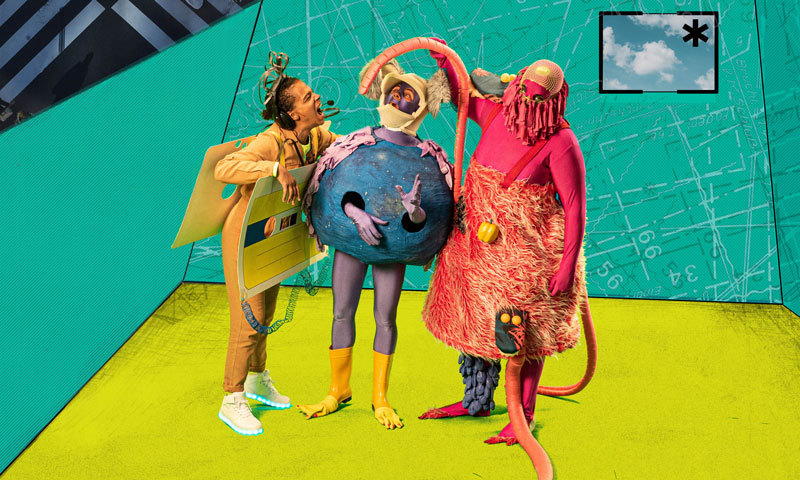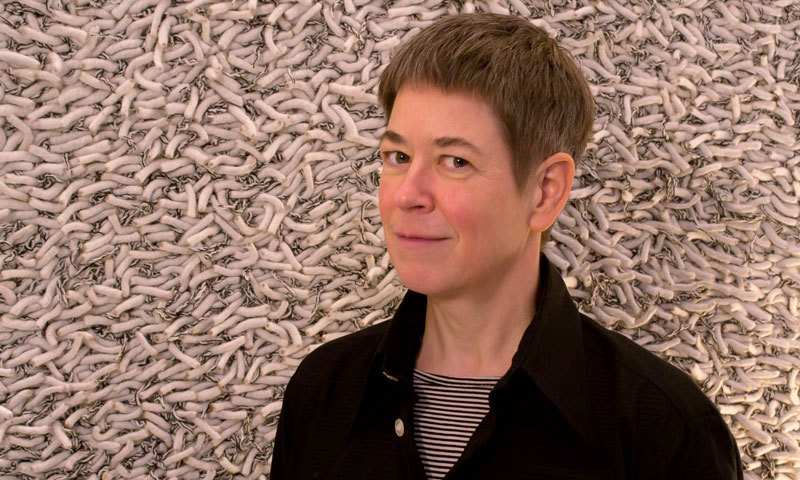News
Ambiguity – Precisely Depicted
[26.02.2021]FernUni visiting professor Antke A. Engel has created unique educational videos about queer theory. Using artistic methods, they provoke the viewer to reflect on power and desire.
 Photo: Tali Tiller/FernUniversität
Photo: Tali Tiller/FernUniversität
People are diverse, with identities and personalities that do not fit into pre-made boxes. Representations in media should therefore give stereotypes, discrimination, and rigid hierarchies a wide berth. From the perspective of Dr. Antke Antek Engel, visiting professor at the FernUniversität in Hagen, this also applies to academic videos. At the hosting Chair of Education and Difference (Professor Dr. Katharina Walgenbach), Engel experimented with a completely new format: In collaboration with filmmakers Tali Tiller and Magda Wystub, they created three educational videos which introduce queer theory in an artistic way – including surreal sets, experimental sound, and imaginative costumes. The academic message is quite literally embodied by the performers, who are not clearly identifiable as humans, animals, or machines.
Antke Engel is the director of Germany’s only Institute for Queer Theory in Berlin. Creating intellectual friction has been one of the researcher’s goals for years. This is also true of the videos produced at the FernUniversität: “They’re meant to create desire for complexity, confusion, and conflict!” In the process, their ambiguity consciously breaks from traditional academic thought patterns. “In our cultural context, we’ve learned to think in either-or logics, in boundaries,” explained Antke Engel. Questioning these logics is an important task of queer theory. It offers a specific way of thinking about difference – and, ultimately, of critiquing domination, since human desire, in the end, is also always interwoven with questions of power.
- Educational videos about queer theory (German with English subtitles) | more
- Read this article in German | more
Introduction to Queer Theory
This is where the videos come in: Three videos, titled “Bodies,” “Figurations,” and “Worlds,” provide insight into important topics in queer theory, including gendered socialization, language and representation, and social inequalities. In spite of the free artistic approach, the videos are peppered with academic quotations, terms, and concepts that are relevant to anyone who wants to delve deeper into queer studies. These run the gamut from “doing sex_gender” to critiques of hetero- and homonormativity to technoscience.
An overarching theme for Engel is to accept ambiguities and change. Trying to erase them is doomed to failure. This applies equally to high-level politics and to the grammatical details of language: “There will always be tension between the ideal of equality and recognition of individuality.” However, once conflicts have been revealed, new connections can arise from them.
 Photo: Tali Tiller
Photo: Tali Tiller
Scholarship Meets Art
The videos were jointly directed by the visiting professor and the Filmfetch collective, which consists of Tali Tiller and Magda Wystub. Engel brought the filmmakers from Berlin on board in order to open up a fresh perspective on the topic. “Filmfetch was exactly the team that I needed in order to translate my very theoretical philosophical approach into a visual format.” Work on the visual concept and script for the educational videos lasted around a year before filming began with the camera team of the FernUniversität’s Center for Media and IT.
During that time, Engel was able to recruit further creative talent to the project. The sound duo HYENAZ (Kathryn Fischer and Adrienne Teicher) enhanced the films with their sound art. Saboura Naqshband, Pasquale Virginie Rotter, Neo Hülcker, and Jayrôme C. Robinet performed in costumes created by Kallia Kefala. Gabi Garland designed the set graphics.
Publicly Available Films
For Engel, a close collaboration between scholarship and art goes without saying: “There is no what without the how. What we express always has a way we express it – and that is ultimately an aesthetic question.” Engel is convinced that art can decisively influence power relationships, and they also want to utilize this potential in their teaching.
“With their artistic and experimental form, the videos explore new avenues for the genre of educational films,” said Professor Katharina Walgenbach, who welcomed the production of the films at her chair. The videos were financed with funds from the Professorinnenprogramm II joint federal-state program for gender equality, the Chair of Education and Difference, and the FernUniversität’s equality program. They have English-language subtitles and are available to the public as Open Educational Resources.

